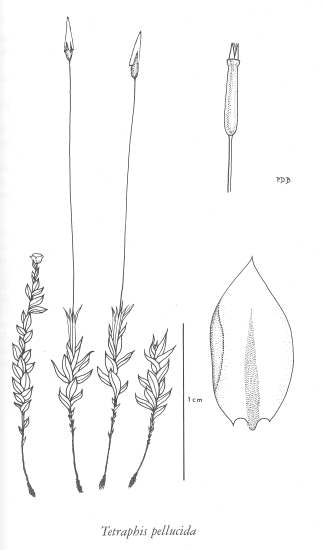E-Flora BC: Electronic Atlas of the Flora of British Columbia
Tetraphis pellucida Hedw.
common four-tooth moss (tetraphis moss) Tetraphidaceae Species Account Author: Wilf Schofield Extracted from Some Common Mosses of British Columbia Introduction to the Bryophytes of BC
|
|||||||||||||||||||||||||||||||||
